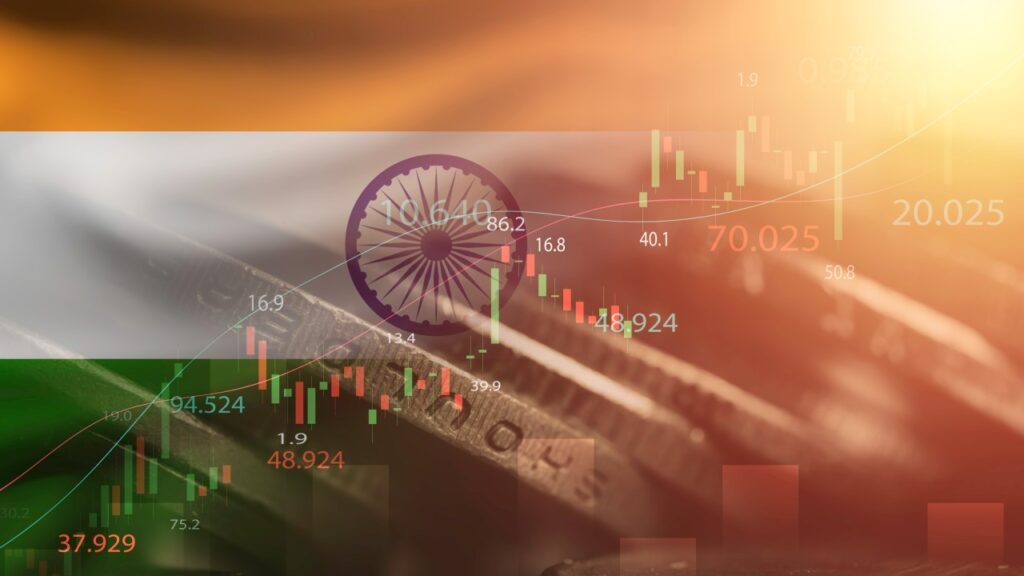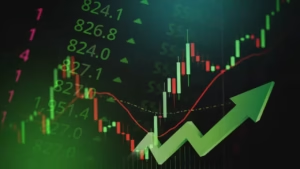India’s Consumer Inflation Rate in March Likely Steady After Four-Month Decline

India’s consumer inflation rate is expected to have remained steady in March 2025, following a four-month period of consecutive declines. Analysts project that inflation, as measured by the Consumer Price Index (CPI), may have held around 5.2% during the month, similar to the levels seen in February. If the inflation rate does indeed remain stable, it would mark a critical juncture for the Indian economy, as inflationary pressures have been one of the key challenges facing policymakers, businesses, and consumers alike.
The CPI Inflation Trend in Recent Months
India’s inflation rate had been on a steady downward trajectory over the last several months, falling from a peak of over 7.8% in October 2024. The reduction in inflation was largely driven by a combination of factors, including lower food prices, a stable currency, and easing global commodity prices. However, as the March 2025 inflation data is projected to remain steady, it reflects a balanced scenario where inflationary pressures are being contained, but not entirely subdued.
Over the last four months, CPI inflation has gradually declined, reflecting positive signs of stabilization in the economy. In November 2024, inflation stood at 6.2%, before dropping further to 5.9% in December. By February 2025, inflation had dropped to 5.2%, which was largely attributed to improved supply chain conditions, a softer global oil market, and a favorable monsoon season that had helped stabilize food prices.
The expected stability in inflation for March follows a relatively benign period for both food and fuel prices, which had been the primary drivers of inflation in India over the past year. However, as global economic conditions and domestic supply issues remain fluid, March’s data is seen as crucial for understanding whether India’s inflation rate will continue to be on a downward trajectory or whether it will enter a period of volatility again.
Key Drivers of Inflation in India
The primary components influencing India’s inflation include food prices, fuel costs, and core inflation (which excludes food and fuel). Let’s take a closer look at each of these contributing factors:
1. Food Prices
Food inflation in India has been a significant concern, particularly for low-income households. However, in recent months, the easing of food price pressures has played a major role in the decline of overall inflation. In March 2025, analysts expect food prices to have remained stable, as the rabi (winter) harvest has been good, and the government’s supply-side interventions, such as subsidies and price controls, have helped to curb price hikes in staple commodities.
Vegetable prices, which had spiked earlier in the year, have shown signs of stabilizing, thanks to increased domestic production and better weather conditions. Prices of pulses, wheat, and rice are also expected to have remained in check, with the government’s procurement policies further ensuring price stability.
2. Fuel Prices
Global oil prices, which have been volatile over the past year due to geopolitical tensions and supply chain disruptions, have had a significant influence on India’s inflation rate. In March 2025, fuel prices were expected to remain relatively stable. Although crude oil prices had seen an uptick earlier in the year, the steadying of global oil markets helped cushion the impact of any fuel price hikes on domestic inflation.
India’s dependence on oil imports makes it particularly vulnerable to fluctuations in global energy prices. However, with global oil prices moderating in recent months and the Indian government taking proactive steps to control fuel taxes, it is expected that fuel prices have not posed a major inflationary challenge in March.
3. Core Inflation
Core inflation, which excludes volatile items like food and fuel, has been a persistent issue in India. In March, core inflation is expected to have remained sticky at around 5.5% to 6%. This persistent high level of core inflation suggests that there are underlying pressures in the economy, particularly in areas such as housing, healthcare, and transportation. Wage growth, rising input costs, and increased demand for goods and services in a recovering economy have all contributed to this steady core inflation.
Despite lower food and fuel prices, the overall stickiness in core inflation reflects that broader economic factors, such as higher demand and wage pressures, continue to play a role in price increases.
Government and RBI Measures to Tackle Inflation
The Indian government and the Reserve Bank of India (RBI) have adopted various measures in response to inflationary pressures over the past year. On the monetary front, the RBI has raised interest rates multiple times since 2024 in an effort to cool down inflation. As of March 2025, the RBI’s benchmark repo rate stood at 6.25%, aimed at keeping inflation within its target band of 4% ± 2%.
The RBI has also been carefully monitoring inflation expectations and domestic demand. Though there is room for further rate hikes if inflationary pressures persist, the central bank has been cautious about taking aggressive actions that could destabilize economic growth, particularly as India continues to recover from the pandemic’s aftermath.
On the fiscal side, the government has focused on supply-side measures, including better procurement policies, subsidies for essential food items, and promoting domestic production of key commodities like pulses and cereals. These efforts have helped to curb some of the inflationary pressures caused by food shortages and supply chain disruptions.
The Outlook for Inflation in the Coming Months
Looking ahead, analysts expect India’s inflation to remain under control for the foreseeable future, provided there are no major shocks to global commodity prices or domestic supply chains. However, certain risks remain. The potential for a global economic slowdown, disruptions in the oil market, or unforeseen geopolitical tensions could impact inflation dynamics in India.
Additionally, the monsoon season plays a crucial role in determining food prices, which make up a significant portion of the CPI basket. Any disruptions to the monsoon or agricultural output could trigger price hikes, especially in key food items like vegetables and grains, which could push inflation higher in the latter half of the year.
India’s consumer inflation rate in March 2025 is likely to have remained steady at 5.2%, following a period of easing over the previous months. While food and fuel price stability has played a crucial role in containing inflation, core inflation remains a persistent challenge for policymakers. The Reserve Bank of India and the government are expected to continue their cautious approach in managing inflation, balancing the need for price stability with the broader goal of supporting economic growth.
As the country moves into the second quarter of 2025, inflation trends will be closely watched, especially as global economic conditions and domestic factors like the monsoon season could influence price levels. The ability of India’s policymakers to navigate these challenges will be key in maintaining economic stability and ensuring that inflation remains within manageable limits.



